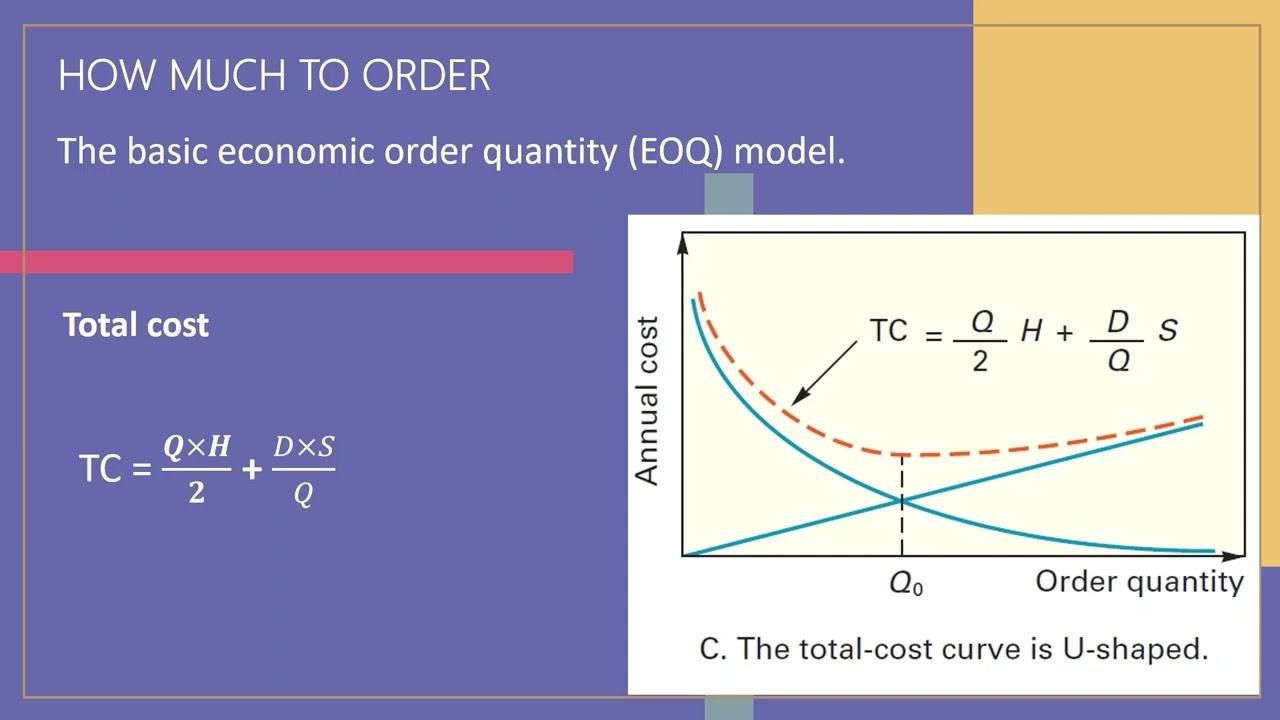Welcome to the world of EOQ logistics, where optimization meets efficiency to streamline your transport and shipping processes. In this article, we will explore the concept of EOQ (Economic Order Quantity) and its implications for the logistics industry. From minimizing costs to maximizing inventory turnover, EOQ logistics is a game-changer for businesses looking to stay ahead in a competitive marketplace. Join us as we dive into the world of EOQ and discover how it can revolutionize the way you approach transportation and shipping.
Understanding the Economic Order Quantity Model
When it comes to managing logistics, transport, and shipping operations, understanding the Economic Order Quantity (EOQ) model is essential. This model helps businesses determine the optimal order quantity that minimizes total inventory costs, including holding costs and ordering costs. By finding the sweet spot where these costs intersect, companies can improve efficiency and profitability in their supply chains.
Utilizing the EOQ model involves calculating the ideal order quantity based on variables such as demand rate, ordering costs, and holding costs. By striking the right balance, businesses can reduce excess inventory, avoid stockouts, and streamline their operations. Implementing EOQ logistics strategies can lead to better inventory management, enhanced cash flow, and improved customer satisfaction. In the competitive world of transportation and shipping, mastering the EOQ model can give companies a strategic advantage.

Optimizing Transportation Costs in Logistics
One key aspect of is by implementing the Economic Order Quantity (EOQ) model. This model helps businesses determine the ideal order quantity that minimizes total inventory costs, including transportation expenses. By calculating the EOQ, companies can reduce the number of orders placed, leading to lower transportation costs per unit.
When it comes to transport and shipping, it is essential to consider various factors to optimize costs effectively. Utilizing a mix of transportation modes, such as road, rail, air, and sea freight, can help businesses find the most cost-effective solution for their logistics needs. Additionally, consolidating shipments, maximizing truckloads, and using advanced routing software can further enhance efficiency and reduce transportation expenses. By implementing these strategies, companies can streamline their logistics operations and achieve significant cost savings.

Maximizing Efficiency in Shipping Operations
When it comes to , businesses need to consider various factors to ensure smooth and cost-effective transportation of goods. One key concept that can help streamline shipping processes is the Economic Order Quantity (EOQ) model. By calculating the optimal order quantity that minimizes total inventory costs, companies can avoid stockouts while also reducing excess inventory holding costs.
Implementing the EOQ model in logistics can lead to improved inventory management, reduced lead times, and better utilization of storage space. By understanding the relationship between ordering costs, carrying costs, and demand variability, organizations can make informed decisions about when and how much to order. This can ultimately result in lower transportation costs, increased customer satisfaction, and a more efficient supply chain overall.

Implementing EOQ Strategies for Effective Supply Chain Management
involves optimizing logistics, transport, and shipping processes to minimize costs and maximize efficiency. By calculating the Economic Order Quantity (EOQ) for inventory management, businesses can determine the ideal quantity of goods to order at one time to minimize holding and ordering costs. This optimization strategy helps in streamlining the supply chain operations and improving overall profitability.
When applying EOQ strategies, businesses need to consider factors such as lead times, demand variability, and ordering costs. By setting up a robust inventory control system based on EOQ calculations, companies can reduce stockouts, avoid overstocking, and enhance customer satisfaction. Additionally, utilizing transportation and shipping methods efficiently can further improve supply chain performance, ensuring timely deliveries and cost-effective distribution of goods. Overall, implementing EOQ logistics can lead to a more agile and responsive supply chain that meets customer demands effectively.
In Conclusion
In conclusion, understanding the concept of Economic Order Quantity (EOQ) in logistics, transport, and shipping is essential for businesses to optimize their supply chain operations. By balancing inventory holding costs and ordering costs, companies can achieve the most cost-effective production and delivery processes. Implementing EOQ principles can lead to improved efficiency, reduced costs, and enhanced customer satisfaction. With careful planning and strategic decision-making, businesses can streamline their operations and stay ahead in today’s competitive market. Stay informed, stay ahead, and watch your business thrive with EOQ logistics.
